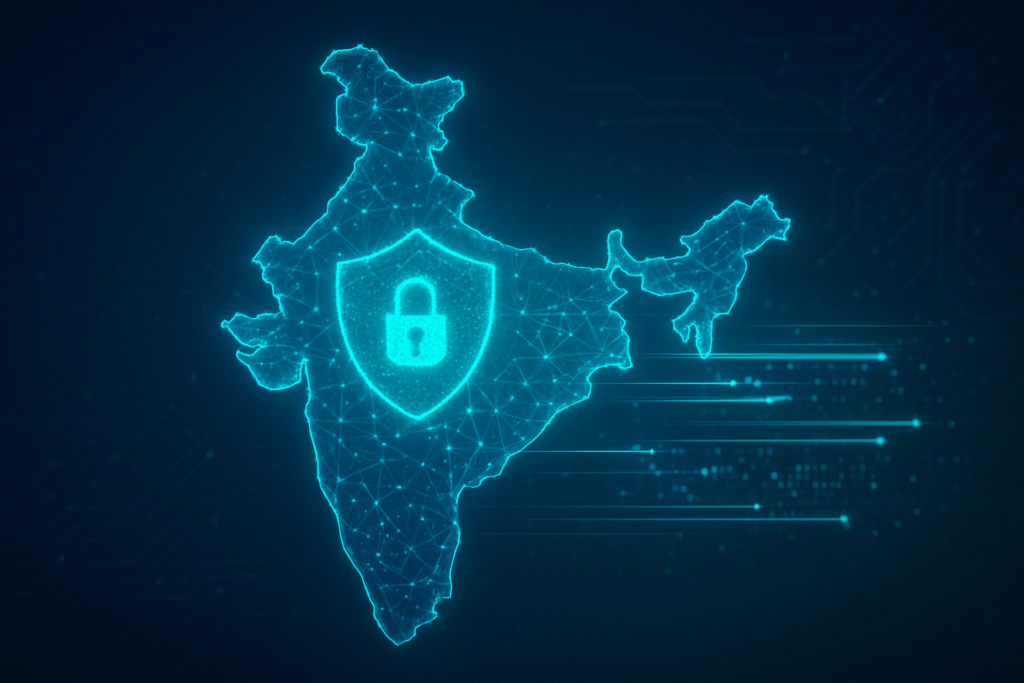
India is on the cusp of a significant telecommunications revolution with the planned nationwide rollout of its Calling Name Presentation (CNAP) system by March 2026. This ambitious initiative, spearheaded by the Department of Telecommunications (DoT) and supported by the Telecom Regulatory Authority of India (TRAI), aims to fundamentally transform how Indians receive and perceive incoming calls. By displaying the verified name of the caller on the recipient's screen, CNAP is poised to be a powerful weapon in the escalating battle against spam, unsolicited commercial communications (UCC), and the pervasive threat of online fraud.
The immediate significance of CNAP lies in its promise to restore trust in digital communication. In an era plagued by sophisticated financial scams, digital arrests, and relentless telemarketing, the ability to instantly identify a caller by their official, government-verified name offers an unprecedented layer of security and transparency. This move is expected to empower millions of mobile users to make informed decisions before answering calls, thereby significantly reducing their exposure to deceptive practices and enhancing overall consumer protection.
A Technical Deep Dive into CNAP: Beyond Crowdsourcing
India's CNAP system is engineered as a robust, network-level feature, designed to integrate seamlessly into the country's vast telecom infrastructure. Unlike existing third-party applications, CNAP leverages official, government-verified data, marking a pivotal shift in caller identification technology.
The core of CNAP's implementation lies in the establishment and maintenance of Calling Name (CNAM) databases by each Access Service Provider (TSP). These databases will store the subscriber's verified name, sourced directly from their Know Your Customer (KYC) documents submitted during SIM card registration. When a call is initiated, the terminating network queries its Local Number Portability Database (LNPD) to identify the originating TSP. It then accesses the originating TSP's CNAM database to retrieve the verified name, which is subsequently displayed on the recipient's device screen before the call begins to ring.
This approach fundamentally differs from previous methods and existing technology, most notably third-party caller ID applications like Truecaller. While Truecaller relies predominantly on crowdsourced data, user-contributed information, and reports—which can often be unverified or inaccurate—CNAP's data source is the authentic, legally registered name tied to official government records. This distinction ensures a higher degree of reliability and authenticity. Furthermore, CNAP is a native, network-level feature, meaning it's embedded directly into the telecom infrastructure and will be activated by default for all compatible users (with an opt-out option), removing the need for users to download and install external applications.
Initial reactions from the telecom industry have been mixed but largely positive regarding the intent. While major telecom operators like Reliance Jio (NSE: JIOFIN), Bharti Airtel (NSE: AIRTELPP), and Vodafone Idea (NSE: IDEA) acknowledge the benefits in combating fraud, they have also voiced concerns regarding the technical complexities and costs. Challenges include the substantial investment required for network upgrades and database management, particularly for older 2G and 3G networks. Some handset manufacturers also initially questioned the urgency, pointing to existing app-based solutions. However, there is a broad consensus among experts that CNAP is a landmark initiative, poised to significantly curb spam and enhance digital trust.
Industry Ripples: Winners, Losers, and Market Shifts
The nationwide rollout of CNAP by 2026 is set to create significant ripples across the Indian telecommunications and tech industries, redefining competitive landscapes and market positioning.
Telecom Operators stand as both primary implementers and beneficiaries. Companies like Reliance Jio, Bharti Airtel, and Vodafone Idea (Vi) are central to the rollout, tasked with building and maintaining the CNAM databases and integrating the service into their networks. While this entails substantial investment in infrastructure and technical upgrades, it also allows them to enhance customer trust and improve the overall quality of communication. Reliance Jio, with its exclusively 4G/5G network, is expected to have a smoother integration, having reportedly developed its CNAP technology in-house. Airtel and Vi, with their legacy 2G/3G infrastructures, face greater challenges and are exploring partnerships (e.g., with Nokia for IMS platform deployment) for a phased rollout. By providing a default, verified caller ID service, telcos position themselves as integral providers of digital security, beyond just connectivity.
The most significant disruption will be felt by third-party caller ID applications, particularly Truecaller (STO: TRUEC). CNAP is a direct, government-backed alternative that offers verified caller identification, directly challenging Truecaller's reliance on crowdsourced data. Following the initial approvals for CNAP, Truecaller's shares have already experienced a notable decline. While Truecaller offers additional features like call blocking and spam detection, CNAP's default activation and foundation on verified KYC data pose a serious threat to its market dominance in India. Other smaller caller ID apps will likely face similar, if not greater, disruption, as their core value proposition of identifying unknown callers is absorbed by the network-level service. These companies will need to innovate and differentiate their offerings through advanced features beyond basic caller ID to remain relevant.
Handset manufacturers will also be impacted, as the government plans to mandate that all new mobile devices sold in India after a specified cut-off date must support the CNAP feature. This will necessitate software integration and adherence to new specifications. The competitive landscape for caller identification services is shifting from a user-driven, app-dependent model to a network-integrated, default service, eroding the dominance of third-party solutions and placing telecom operators at the forefront of digital security.
Wider Significance: Building Digital Trust in a Connected India
India's CNAP rollout is more than just a technological upgrade; it represents a profound regulatory intervention aimed at strengthening the nation's digital security and consumer protection framework. It fits squarely into the broader landscape of combating online fraud and fostering digital trust, a critical endeavor in an increasingly connected society.
The initiative is a direct response to the pervasive menace of spam and fraudulent calls, which have eroded public trust and led to significant financial losses. By providing a verified caller identity, CNAP aims to significantly reduce the effectiveness of common scams such as "digital arrests," phishing, and financial fraud, making it harder for malicious actors to impersonate legitimate entities. This aligns with India's broader digital security strategy, which includes mandatory E-KYC for SIM cards and the Central Equipment Identity Register (CEIR) system for tracking stolen mobile devices, all designed to create a more secure digital ecosystem.
However, the rollout is not without its potential concerns, primarily around privacy. The mandatory display of a user's registered name on every call raises questions about individual privacy and the potential for misuse of this information. Concerns have been voiced regarding the safety of vulnerable individuals (e.g., victims of abuse, whistle-blowers) whose names would be displayed. There are also apprehensions about the security of the extensive databases containing names and mobile numbers, and the potential for data breaches. To address these, TRAI is reportedly working on a comprehensive privacy framework, and users will have an opt-out option, with those using Calling Line Identification Restriction (CLIR) remaining exempt. The regulatory framework is designed to align with India's Data Protection Bill (DPDP), incorporating necessary safeguards.
Compared to previous digital milestones, CNAP is a significant step towards a government-regulated, standardized approach to caller identification, contrasting with the largely unregulated, crowdsourced model that has dominated the space. It reflects a global trend towards operator-provided caller identification services to enhance consumer protection, placing India at the forefront of this regulatory innovation.
The Road Ahead: Evolution and Challenges
As India moves towards the full nationwide rollout of CNAP by March 2026, several key developments are anticipated, alongside significant challenges that will need careful navigation.
In the near term, the focus will be on the successful completion of pilot rollouts by telecom operators in various circles. These trials, currently underway by Vodafone Idea and Reliance Jio in regions like Haryana and Mumbai, will provide crucial insights into technical performance, user experience, and potential bottlenecks. Ensuring device compatibility is another immediate priority, with the DoT working to mandate CNAP functionality in all new mobile devices sold in India after a specified cut-off date. The establishment of robust and secure CNAM databases by each TSP will also be critical.
Longer-term developments include the eventual extension of CNAP to older 2G networks. While initial deployment focuses on 4G and 5G, bringing 200-300 million 2G users under the ambit of CNAP presents substantial technical hurdles due to bandwidth limitations and the architecture of circuit-switched networks. TRAI has also proposed revising the unified license definition of Calling Line Identification (CLI) to formally include both the number and the name of the caller, solidifying CNAP's place in the telecom regulatory framework.
Potential future applications extend beyond basic spam prevention. CNAP can streamline legitimate business communications by displaying verified trade names, potentially improving call answer rates for customer support and essential services. In public safety, verified caller ID could assist emergency services in identifying callers more efficiently. While CNAP itself is not an AI system, the verified identity it provides forms a crucial data layer for AI-powered fraud detection systems. Telecom operators already leverage AI and machine learning to identify suspicious call patterns and block fraudulent messages. CNAP's validated caller information can be integrated into these AI models to create more robust and accurate fraud prevention mechanisms, particularly against emerging threats like deepfakes and sophisticated phishing scams.
However, challenges remain. Besides the technical complexities of 2G integration, ensuring the accuracy of caller information is paramount, given past issues with forged KYC documents or numbers used by individuals other than the registered owner. Concerns about call latency and increased network load have also been raised by telcos. Experts predict that while CNAP will significantly curb spam and fraud, its ultimate efficacy in fully authenticating call legitimacy and restoring complete user trust will depend on how effectively these challenges are addressed and how the system evolves.
A New Era of Trust: Concluding Thoughts
India's verified caller ID rollout by 2026 marks a watershed moment in the nation's journey towards a more secure and transparent digital future. The CNAP system represents a bold, government-backed initiative to empower consumers, combat the persistent menace of spam and fraud, and instill a renewed sense of trust in mobile communications.
The key takeaway is a fundamental shift from reactive, app-based caller identification to a proactive, network-integrated, government-verified system. This development is significant not just for India but potentially sets a global precedent for how nations can leverage telecom infrastructure to enhance digital security. Its long-term impact is poised to be transformative, fostering a safer communication environment and potentially altering user behavior towards incoming calls.
As we approach the March 2026 deadline, several aspects warrant close observation. The performance of pilot rollouts, the successful resolution of interoperability challenges between different telecom networks, and the strategies adopted to bring 2G users into the CNAP fold will be critical. Furthermore, the ongoing development of robust privacy frameworks and the continuous effort to ensure the accuracy and security of the CNAM databases will be essential for maintaining public trust. The integration of CNAP's verified data with advanced AI-driven fraud detection systems will also be a fascinating area to watch, as technology continues to evolve in the fight against cybercrime. India's CNAP system is not merely a technical upgrade; it's a foundational step towards building a more secure and trustworthy digital India.
This content is intended for informational purposes only and represents analysis of current AI developments.
TokenRing AI delivers enterprise-grade solutions for multi-agent AI workflow orchestration, AI-powered development tools, and seamless remote collaboration platforms.
For more information, visit https://www.tokenring.ai/.





